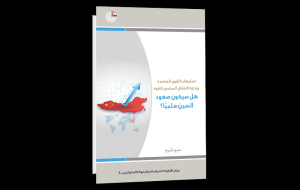Authors: Richard A. Clarke and Robert K. Knake
Publisher: The Emirates Center for Strategic Studies and Research (ECSSR) [In Arabic]
Publication Year: 2012
Summary
The term ‘cyber war’ refers to unauthorized actions taken by a state to penetrate another nation’s network, or any other activity that affects digital systems with the aim of adding, altering or falsifying data. It can also seek to disrupt or damage computer systems, a network device or the areas and objects a computer system controls.
The rise in cyber-related incidents in recent years confirms that state conflict involving cyber attacks has begun. In understanding cyber warfare, there are five key take-aways:
First, cyber warfare is a reality. What we have witnessed so far is nothing compared to what could happen. Most known conflicts in cyberspace use rudimentary electronic weapons, and it is reasonable to assume that the perpetrators did not want to reveal their advanced capabilities just yet. However, the cyber conflict capabilities of countries like the United States have the potential to devastate another nation.
Second, cyber warfare takes place at the speed of light. When the photons of attack packets stream though a fiber-optic cable, the time between launching an attack and its impact is almost immeasurable, creating substantial risks for decision-makers during a crisis.
Third, cyber war is global. In any conflict, cyber attacks quickly spread around the world. As hidden or hacked computers and servers around the world quickly join the onslaught, many nations are rapidly drawn into the conflict.
Fourth, cyber warfare does not require traditional battlefields. Vital systems, from banks to air defense radars, are accessible in cyberspace and can be quickly taken over or knocked out, without the need to penetrate traditional defenses.
Fifth, the era of cyber warfare has begun. In anticipation of hostilities, nations are already ‘preparing the battlefield’. They are hacking into each other’s networks and infrastructures, laying trapdoors and logic bombs — all of this is taking place now, in peacetime. This continuous nature of cyber conflict, which blurs the line between peace and war, adds a dangerous new dimension of instability.
In 2009, the United States established a new military command, US Cyber Command, which includes several major branches of the military, focused on the use of information technology and the Internet as weapons of war. The perception that cyberspace is a ‘domain’ where fighting takes place, for the US to dominate, pervades American military thinking on the subject of cyber war. In fact, several countries have begun to focus on the development of cyber war capabilities. The most prominent among them is Russia, viewed by US intelligence officials as the greatest threat to the US in cyberspace; while China has also made remarkable advancement in areas of cyber warfare. Other nations known to have skilled cyber warfare units include Israel and France. US intelligence officials suggest there are twenty to thirty militaries with significant cyber capabilities, including Taiwan, Iran, Australia, South Korea, India, Pakistan and several NATO states. “The vast majority of the industrialized countries in the world today have cyber-attack capabilities,” said former Director of National Intelligence Admiral Mike McConnell.
Three characteristics of cyberspace make cyber conflict possible; Internet design flaws, defects in hardware and software, and the move toward putting more and more critical systems online.
Measuring a nation’s strength in cyber warfare does not depend solely only on its offensive capabilities, but also on two additional factors; defense and dependence. Defense relates to a nation’s ability to, when targeted, take measures to block or mitigate an attack. Dependence is the extent to which a nation is reliant upon networks and systems that could be vulnerable in the event of a cyber attack.
When considering both defense capability and level of non-dependence, many nations score higher than the US. Their ability to survive a cyber attack, at lower costs than the US, creates a ‘cyber war gap’. This allows cyber warfare to be used against the US to inflict heavy losses, while perpetrators may be able to withstand a US cyber response. This cyber war gap could tempt some nations to attack the United States. Since it is now impossible to reduce dependence on networked systems, the only way to bridge the gap and improve overall strength in cyber warfare, is to improve defenses.
Defense is based on three key components (the Defense Triad), the first of which is to protect the backbone of the internet, represented by the major internet service providers. The second is to secure electricity networks, and the third is to protect Department of Defense networks.
About the Authors:
Richard A. Clarke: Clarke served as a key advisor on intelligence and counterterrorism in the administrations of Presidents Ronald Reagan, George H. W. Bush and Bill Clinton. In 1998 President Clinton appointed him National Coordinator for Security, Infrastructure Protection, and Counterterrorism for the US National Security Council. Clarke has taught at the John F. Kennedy School of Government at Harvard University, and consulted for ABC News on political and security issues. He is the author of seven books, both fiction and nonfiction, including Against All Enemies: Inside America’s War on Terror.
Robert K. Knake: A senior fellow at the Council on Foreign Relations, Knake is a senior research scientist at Northeastern University, and an adviser to investment firms and Fortune 500 companies.













